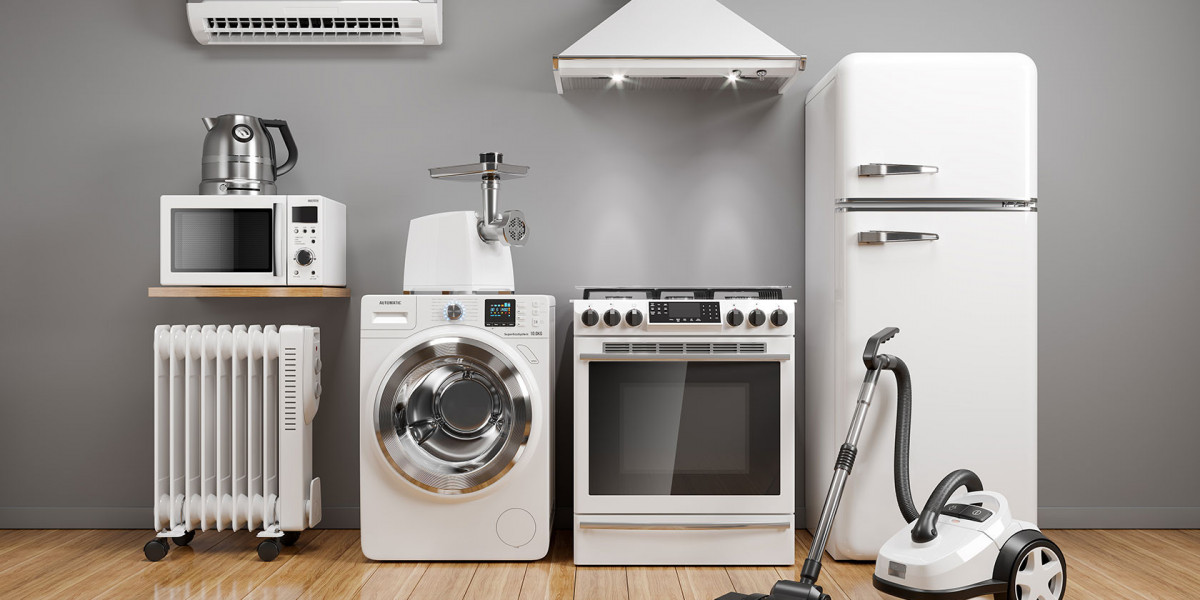Introduction
The white goods market, which includes household appliances like refrigerators, washing machines, air conditioners, and dishwashers, is highly competitive and dynamic. As technological advancements continue to shape the industry and consumer preferences evolve, the pricing landscape for white goods has become increasingly complex. Manufacturers must balance the desire for innovation with the need to keep prices competitive, while also responding to changing consumer expectations.
This article explores the latest pricing trends in the white goods market and how they align with consumer expectations, especially in an era marked by economic fluctuations, environmental concerns, and technological disruptions.
1. Pricing Trends in the White Goods Market
a. Shift Toward Premium Pricing
Over the past decade, there has been a significant shift in the white goods market towards premium pricing for high-end products, particularly those that incorporate the latest technological innovations, energy-efficient features, and sleek designs. Consumers are increasingly willing to invest more in appliances that promise greater convenience, energy savings, and longer lifespans.
Smart Appliances: The integration of smart technologies into appliances has driven up prices. Products like smart refrigerators, AI-powered washing machines, and voice-controlled air conditioners come with premium pricing due to the advanced features they offer. Consumers are often willing to pay more for appliances that can be remotely controlled, integrate with smart home ecosystems, and offer features like energy monitoring or self-diagnosis.
Energy-Efficient Appliances: With growing concerns about environmental sustainability and high utility costs, energy-efficient appliances have become a significant factor influencing pricing. Products with inverter technology, eco-friendly refrigerants, and low energy consumption tend to come at a higher price point due to the advanced technology and environmental compliance involved. These higher upfront costs are often justified by long-term savings on energy bills.
b. Price Pressure from E-Commerce and Competition
While premium pricing is prevalent for high-tech, feature-rich products, the white goods market is also experiencing significant price pressure from the rise of e-commerce platforms and price competition. Online retailers, which offer a wide selection of white goods at competitive prices, are forcing traditional brick-and-mortar stores to re-evaluate their pricing strategies.
Discounting and Promotions: E-commerce has given rise to more frequent promotions, flash sales, and discounts, making it easier for consumers to shop around for the best deals. Retailers are increasingly offering bundled promotions, financing options, and price reductions to attract price-sensitive buyers.
Competition from New Entrants: As the market for white goods becomes more saturated, new brands and international players are entering the market, bringing additional competition and often lower-priced alternatives. These brands typically focus on offering high-quality products at affordable prices, pushing established brands to reconsider their pricing strategies.
c. Impact of Raw Material Costs on Pricing
The cost of raw materials plays a crucial role in shaping the pricing strategies for white goods. Materials like steel, aluminum, plastic, and copper, along with microchips for smart features, have experienced price volatility in recent years due to global supply chain disruptions, geopolitical tensions, and increased demand for certain materials.
Rising Material Costs: Fluctuations in the price of raw materials have directly impacted the manufacturing costs for white goods. As the prices of steel, copper, and plastics rise, manufacturers face higher production costs, which may result in price hikes for consumers.
Supply Chain Disruptions: Events like the COVID-19 pandemic and global logistics disruptions have made it harder for manufacturers to secure key materials at stable prices, further adding pressure to maintain reasonable pricing for their products. These cost increases are often passed on to consumers, although some manufacturers may try to absorb the additional cost in order to remain competitive.
2. Consumer Expectations in the White Goods Market
a. Value for Money
Consumers have become more discerning in recent years, seeking value for money when purchasing white goods. While many are willing to pay a premium for high-end, energy-efficient, or smart appliances, the expectation is that these products will deliver tangible benefits, such as reduced energy consumption, long-term durability, and enhanced functionality.
Energy Savings: Consumers increasingly expect white goods to provide long-term savings, especially in the form of lower energy bills. Energy Star-rated appliances and those with inverter technology are seen as a good investment, as they can offer higher efficiency without significantly raising upfront costs.
Durability and Longevity: Consumers are also looking for appliances that last longer. The expectation for high-quality materials and longer product lifecycles is growing, especially as products become more expensive. Brands that emphasize durability and provide warranties that reassure consumers about the longevity of the product tend to perform better in the market.
b. Convenience and Technology Integration
As homes become more connected and smarter, consumers are increasingly demanding appliances that are not only efficient but also convenient to use. The rise of smart homes has dramatically shifted consumer expectations toward appliances that integrate seamlessly with their digital lifestyles.
Smart Appliances: Today’s consumers expect smart refrigerators, voice-activated dishwashers, and Wi-Fi-enabled washing machines to be compatible with other connected devices like smart thermostats and voice assistants such as Amazon Alexa and Google Assistant. The convenience of remote control, energy monitoring, and predictive maintenance is driving demand for these products, even at higher price points.
Intuitive Interfaces: Consumers also expect appliances with user-friendly interfaces that simplify operation. Touchscreens, mobile apps, and voice commands have become a must-have feature in many white goods, allowing consumers to control, monitor, and troubleshoot their appliances remotely.
c. Sustainability and Eco-Consciousness
As environmental concerns become more pronounced, consumers are placing greater emphasis on the sustainability of the products they purchase. White goods that are designed with energy efficiency, eco-friendly refrigerants, and recyclable materials are increasingly in demand.
Eco-Friendly Features: Appliances that minimize environmental impact through energy efficiency, reduced carbon emissions, and responsible waste management are highly appealing. Consumers expect white goods manufacturers to reduce their environmental footprint while still offering functional, affordable products.
Ethical Manufacturing: Along with sustainability, consumers are becoming more interested in the ethical practices of manufacturers. Brands that adopt fair labor practices, source materials responsibly, and offer transparent supply chains are gaining favor among eco-conscious buyers.
d. Customization and Personalization
Consumers are also seeking personalization in their white goods. This includes a variety of color options, customizable features, and the ability to tailor the appliance’s functionality to specific needs.
Design Preferences: As homes become more personalized, consumers expect a wider variety of design options. From sleek minimalist designs to retro-inspired models, the aesthetic appeal of an appliance is becoming as important as its functionality.
Functional Customization: In appliances like washing machines, refrigerators, and dishwashers, consumers may expect customizable settings based on their unique usage patterns. For example, washing machines that allow the selection of specific wash cycles or refrigerators with customizable shelving layouts.
3. Balancing Pricing and Consumer Expectations
Manufacturers in the white goods market face the delicate challenge of balancing pricing with consumer expectations. As consumers demand more advanced features, sustainability, and technological integration, brands must adjust their pricing strategies accordingly. Here are a few ways manufacturers can address this challenge:
a. Value-Based Pricing
A value-based pricing strategy allows manufacturers to align their pricing with the perceived value of the product to the consumer. By focusing on the features that consumers value most—whether it’s energy efficiency, smart capabilities, or durability—brands can justify premium pricing for high-end products while still appealing to a broader market segment.
b. Tiered Product Offerings
Many brands offer tiered product lines, where consumers can choose from entry-level models with basic features, mid-range models with some smart or energy-efficient capabilities, and premium models that come with the latest technology. This approach allows manufacturers to cater to different consumer budgets while meeting varying expectations.
c. Subscription Models and Financing Options
Some manufacturers are exploring subscription-based models or financing options to make high-priced products more accessible to consumers. By offering extended payment plans or subscription services for appliance upgrades, manufacturers can attract more price-sensitive buyers while maintaining higher product prices.
Conclusion
The white goods market is at a crossroads, where pricing trends are increasingly influenced by consumer expectations for smarter, more energy-efficient, and eco-friendly appliances. As consumers demand more value, sustainability, and technology integration, manufacturers must strike a careful balance between offering cutting-edge features and maintaining competitive pricing. In the future, companies that can navigate these complexities and deliver products that align with consumer preferences will continue to thrive in an increasingly crowded and cost-conscious market.









